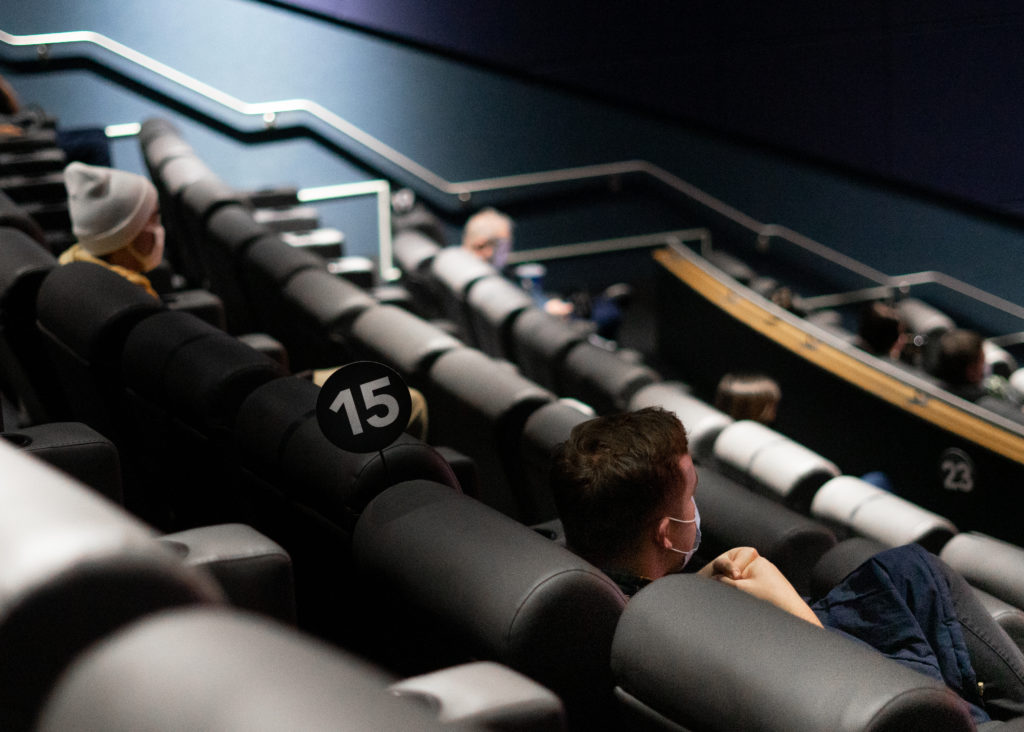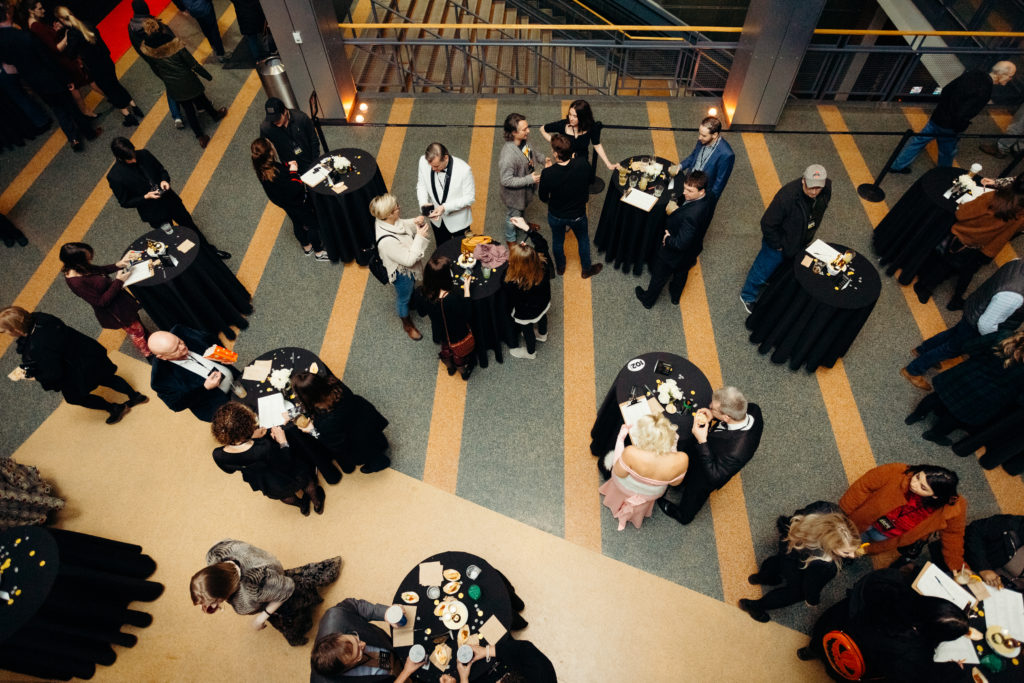As the cinema industry begins to emerge from the Covid-19 pandemic, Boxoffice Pro and Spotlight Cinema Networks are partnering to profile movie theaters and influential industry figures from across the country and asking them to share their first-person accounts of bringing the movies back to the big screen. Our subject this month is Chris Hamel, President of Columbus, Ohio’s Gateway Film Center.
What role does the Gateway Film Center play in its local community and how did you get involved with it?
The film center is the real epitome of unique. We sometimes feel like an arts center, sometimes it appears to be somewhat of a commercial venue, but I don’t think there’s anything really like it in the country. It was originally developed by the city and Ohio State University to drive economic development to a part of the city that was being revitalized. It was originally operated by the Drexel Theatres group, which was a small, local chain that was here in Columbus at the time. Landmark Theaters operated the venue for a few years as well. I was retained as a consultant in 2009 to figure out why it wasn’t working the way that the developers had hoped it would. We realized at the time that we had to really become an integral part of the arts community in Columbus to reach those goals. That is why the Film Center is really focused on artists and filmmakers; we don’t exclusively play independent, commercial, or local films. We try to curate a mix of the best of all three. And I really think we’ve done a pretty good job at building trust locally and in the region. People believe in curation here. Columbus is really a great arts city, and the Film Center is a part of that arts community.
How did the Gateway Film Center establish itself in the Columbus arts scene?
I think it’s fair to say that the legacy arts leaders in the city were a little skeptical of us. They thought of us as just a traditional movie theater, and a lot of people in the U.S. think of movies as a commodity: get a bunch of people in, sell concessions, move on. We spent the first few years really trying to explain to the other arts leaders in the city that that wasn’t really our model … in time, I think we were able to earn their trust and build really meaningful partnerships.
Sometimes our role here at the Film Center is to act as the host, and sometimes we’re the venue. If there’s a film festival or another organization that wants to host a screening, we have a great place to do it and we take the responsibility seriously in letting them tell their story. Other times our role is in the curation and creation of these opportunities.
We see it as critically important to get filmmakers in our city who are ready to present their film the way they’ve always wanted to, on the big screen. Nobody spends two years of their life on a project to watch it on their computer; they want that big screen environment. If you’re a filmmaker in our city or region, and you want to see how your film looks along the way, we make ourselves available so that you can come in, without paying a bunch of fees, and take a look at your work in progress. A lot of venues in our industry can’t offer that screen space without an economic return––and I have nothing but empathy for that position––but our situation is a little bit unique. During the time when the Film Center is closed, it’s nice to allow people to use the screen to take a look at their films.

How did the Gateway Film Center navigate the Covid-19 pandemic?
I don’t know anybody in our field who was prepared for the challenges of the pandemic, but we still found ways to form meaningful partnerships. We worked with the [Columbus Museum of Art] on presenting some films about artists, we did talks … we looked at every way we could maintain our partnerships and find new ways to innovate during the pandemic.
In some ways, the operational challenges were greater than the external ones. We’ve got a team assembled that’s been in operations for a lot of years, but we were all required to put on our learning hats to really understand the appropriate levels of sanitation, cleaning, social distancing, and health measures that were required to be a responsible exhibitor. We spent the better part of those first few months of the pandemic trying to understand that. I don’t have any animosity toward the CDC or our local health organizations—they were learning as well. Once we got our heads around it, it really became about outfitting the venue so that we could reopen responsibly and ensure we kept our patrons safe.
Did you go through any cycles of reopening and having to close back down again?
We reopened for two little bursts during the pandemic. The first was when we were selected as one of the venues to host the Sundance Film Festival; we opened for those five days in January. We then did a little test run in late April, when we screened all the Best Picture nominees and all the nominated short films over a four-day period. We were able to even have our patrons stay and watch the broadcast of this year’s Academy Awards. We sold every ticket available, for both those iterations. Now, granted, we were operating at limited capacity, 30 percent, so the sellouts didn’t feel the way they used to back in 2019.

What were the main lessons you took from those experiences?
The first lesson we all learned and talked about as a group afterward is that people cannot wait to see a movie on the big screen again. The audience was amazing. We had received countless individual donations ahead of both openings. People came in and brought our staff doughnuts and food. You could tell there was a huge desire for people to get back to the cinema. I remember thinking that we weren’t going to have much of an issue reintroducing ourselves to the community.
Like a lot of venues that reopened, we limited some of our food and beverage offerings and amenities when we finally opened our doors. We were very careful about food and drink for both Sundance and award-season weekend, but we quickly learned that all of those missing products were ones people had grown accustomed to––and they asked for them. They weren’t on our menu boards, but the audience knew about them and wanted them back.
What did your programming look like when you “officially” reopened in late May?
I feel like we’ve been in a period of innovation in exhibition since 2010, things have changed so much. When we got to 2020, it wasn’t like streaming was invented that year. Netflix had already fully cornered the market five years ago. Now you’re seeing all these new [streaming] players come along, changing the options people have to watch something at home. This is the time to innovate [our programming] and I feel pretty proud of what we’ve done. We don’t really identify in any traditional programming bucket, we’re just focused on booking the best films available from around the world in any given week, month, or season. And that’s what we’re doing as we reopen: you’re going to see some commercial stuff like A Quiet Place Part II, and we’re also going to screen independent and festival films like Gunda and Port Authority. In our repertory programming we’re doing a retrospective of the films by Cartoon Saloon from Ireland, we’re showing all of Chloe Zhao’s feature films and shorts, and we’ve got a 4K restoration of The Silence of the Lambs on the schedule.
How much of a role does curation and programming play in how you engage with your core audience?
Audiences will be subjective. Sometimes they’ll like the thing that you curate, sometimes they won’t. But I think they can trust and feel something when they know the effort’s going in to bring them things that are original, innovative, and interesting. That’s what we’re looking for. It’s not hard to program A Quiet Place Part II, but I know a lot of traditional art houses would say, “That’s just a commercial genre sequel.” That’s not really how we see it. If we think something is thought-provoking and interesting, if it’s from a filmmaker to keep an eye on, then that’s a good thing to be a part of if you’re an audience member. I have a tremendous amount of respect for traditional art house cinemas, but I also think there’s an opportunity to be more innovative, quite frankly, in this sector of the exhibition world. I have never gotten into a conversation about print count with anybody outside of our industry. None of my friends or family knows whether any given film is being released in 500 venues. Nobody cares. What they care about is seeing quality films.
As we emerge from the pandemic, how have additional revenue streams like cinema advertising helped your cinema recover from the impact of the closures?
I can’t say enough complimentary things about the folks at Spotlight Cinema Networks. Full disclosure: I spent 10 years working in cinema advertising, so I know how challenging it is to appeal to national brands while still being respectful and caring about local venues who have footing in their cities. It’s a balancing act, and they manage it quite well. There are two ways that I think they really help us. One, they help us gain credibility by bringing in these national partners and advertisers. If I’m an audience member, and I see a major brand associated with an independent venue, there’s some added credibility there. And there’s also the economics: quite frankly, this is an important revenue stream for us, and it was noticeable when we didn’t have it for those 14 months. There are people who get to have jobs in our venue because of the relationship with Spotlight, and I’m really pulling for them to have a great recovery alongside us in 2021.
Listen to Boxoffice Pro‘s interview with Chris Hamel in this week’s episode of the Boxoffice Podcast—then rate and subscribe on Spotify, Apple, or wherever you get your podcasts.
Indie Focus is Brought to You By Spotlight Cinema Networks.
The post Indie Focus: Gateway Film Center—Columbus, Ohio appeared first on Boxoffice.
from Boxoffice





0 comments:
Post a Comment